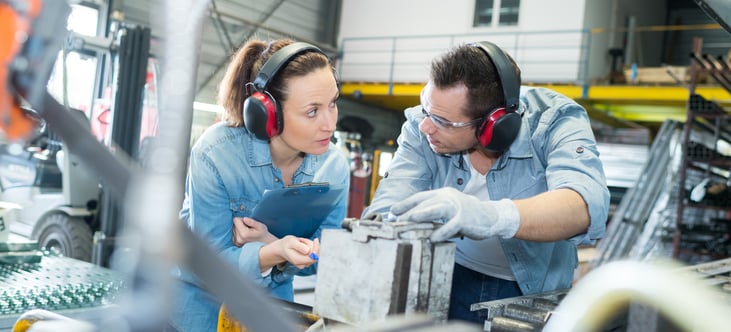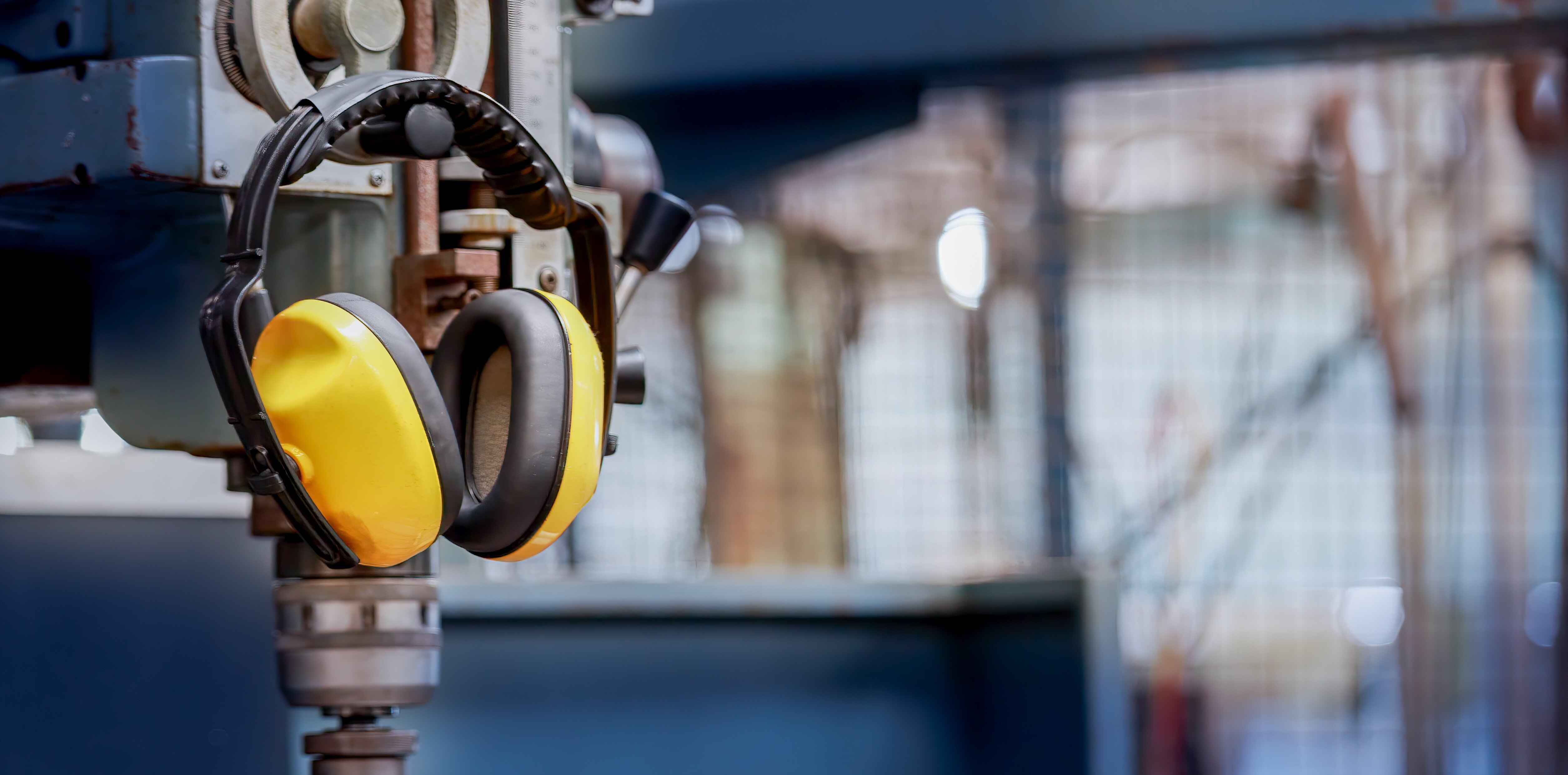Hearing Protection in Manufacturing and Construction

Worker safety is a primary concern in any industry, particularly in high-risk sectors such as manufacturing and construction. Among the various safety measures, hearing protection often takes a back seat despite its critical importance. Hearing issues are one of the most common physical side effects among factory workers - an estimated 22 million workers per year experience hazardous noise in the workplace. Prolonged exposure to high noise levels can lead to irreversible hearing damage, making it important to prioritize hearing protection.
Why Hearing Protection is Crucial
High volume noise can damage the inner ear, leading to noise-induced hearing loss (NIHL). In manufacturing and construction, workers are frequently exposed to loud machinery, power tools, and other sources of hazardous noise. Without adequate protection, the long-term health consequences include not only hearing loss but also tinnitus, headaches, elevated blood pressure, fatigue, stress, and cardiovascular issues. Worryingly, workers may mistakenly believe that the ability to tolerate the noise around them means it couldn’t be causing them any harm.

Understanding Unsafe Decibel Levels
 Decibels (dB) measure the intensity of sound. Safe exposure levels are typically considered to be below 85 dB. However, in manufacturing and construction, it is common to encounter noise levels that far exceed this threshold. For example, a jackhammer can produce noise levels of around 100 dB, while heavy machinery can generate up to 120 dB. The duration and proximity to these noise sources significantly impact the risk. We are able to withstand high decibels for shorter periods of time (concerts, lawnmowers, etc), but prolonged exposure increases the potential for hearing damage.
Decibels (dB) measure the intensity of sound. Safe exposure levels are typically considered to be below 85 dB. However, in manufacturing and construction, it is common to encounter noise levels that far exceed this threshold. For example, a jackhammer can produce noise levels of around 100 dB, while heavy machinery can generate up to 120 dB. The duration and proximity to these noise sources significantly impact the risk. We are able to withstand high decibels for shorter periods of time (concerts, lawnmowers, etc), but prolonged exposure increases the potential for hearing damage.
Costs of Non-Compliance
Failing to adhere to hearing protection standards can have severe legal and financial consequences for businesses. Non-compliance with occupational safety regulations can result in hefty fines and legal actions. Moreover, the long-term costs associated with workers' health issues and compensation claims can be substantial. Studies conducted by OSHA have shown that workplaces implementing hearing conservation programs experience heightened productivity levels and reduced absenteeism rates. Investing in proper hearing protection is not only a legal obligation but also a financially sound decision that protects both employees and the business.
Types of Hearing Protection Products
- Metal Detectable Earplugs: Designed for environments where contamination is a concern, such as in food processing integrated with manufacturing.
- Disposable Earplugs: Affordable, single-use options for visitors or infrequent noise exposure.
- Reusable Earplugs: Cost-effective for regular employees, easy to clean and store.
- Over-the-Ear Earmuffs: Best for intermittent use, easy to put on and take off, providing substantial noise isolation.
- Helmet-Attached Earmuffs: Ideal for construction sites, integrates seamlessly with safety helmets.

Explaining Noise Reduction Rating (NRR)
The Noise Reduction Rating (NRR) indicates the effectiveness of hearing protection devices in reducing noise levels. The higher the NRR, the greater the noise reduction. For instance, an NRR of 30 means the device can reduce noise exposure by up to 30 dB, making it crucial to select hearing protection with an appropriate NRR for the specific noise levels in the workplace. NRRs will often be expressed as a range instead of a single number, since variability in fit yields different results. OSHA recommends that actual decibel reduction for NRR ratings should be estimated in the following manner: subtract seven from the stated NRR and then divide the result by two.


Choosing the Right Hearing Protection
Selecting the right hearing protection involves considering the specific needs of the work environment. Factors such as the type of noise, duration of exposure, and comfort of the device play a significant role. Workers should be trained how to correctly wear and maintain their hearing protection devices to ensure they receive the full benefit. They should leave the training session able to identify noise hazards and understand how those hazards can affect them.
When is hearing protection required?
Hearing protection is required when employee noise exposures equal or exceed an eight-hour time-weighted average sound level of 85 decibels (dB)
What does attenuation mean?
Attenuation is the decrease in noise levels that occurs when wearing protective gear for hearing.
When is double hearing protection required?
When the sound levels in a work environment reach or exceed 100 dBA, wearing two layers of hearing protection becomes essential. While OSHA regulations do not explicitly mandate double hearing protection, the advisory and research board affiliated with OSHA strongly recommends it for individuals exposed to such high noise levels.
Safeguarding Hearing
Hearing protection is a vital aspect of workplace safety in manufacturing and construction. By prioritizing hearing protection and adhering to safety standards, businesses can safeguard their workers' health and avoid significant costs associated with non-compliance. Investing in the right hearing protection products is a proactive step towards creating a safer and more productive work environment. It also reduces accidents and protects the ability to communicate effectively. For a comprehensive range of hearing protection solutions, explore our offerings to find the perfect fit for your workplace needs.


